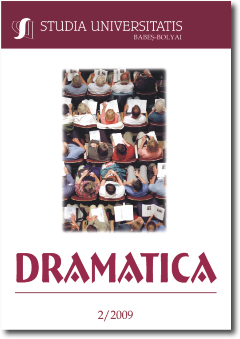THĖÂTRALITĖ DU CINĖMA, LE POUR ET LE CONTRE: VISCONTI / TRUFFAUT
THE THEATRICALITY OF CINEMA, THE PROS AND THE CONS: VISCONTI / TRUFFAUT
Author(s): Ioan Pop-CurșeuSubject(s): Theatre, Dance, Performing Arts
Published by: Studia Universitatis Babes-Bolyai
Keywords: theatricality; cinema; theatre; scene; life; Luchino Visconti; François Truffaut.
Summary/Abstract: The Theatricality of Cinema, the pros and the cons: Visconti / Truffaut. The present article aims at showing two different ways of conceiving the theatricality of cinema. The first, that of Luchino Visconti (pour la théâtralité), is based upon a favourable theoretical environment; the metteur en scène considers – in his studies – that theatre and cinema are very similar in their working techniques. On the contrary, Visconti’s artistic practice – with the most notable exception of Senso – shows a precise delimitation between cinema and theatre: the director prefers to search his inspiration in painting, photography, sculpture and music. The second approach, that of François Truffaut (contre la théâtralité), is based upon an unfavourable attitude derived from the so-called “cinéphilie”. In his studies, Truffaut rejects the theatricality and focuses on specific cinematographic grounds. But, in practice, he offers to the spectator one of the most beautiful meditations on theatre and life, on the profound nature of theatricality in his film, Le Dernier metro (1980).
Journal: Studia Universitatis Babes-Bolyai - Dramatica
- Issue Year: 2011
- Issue No: 1
- Page Range: 63-81
- Page Count: 19
- Language: French

